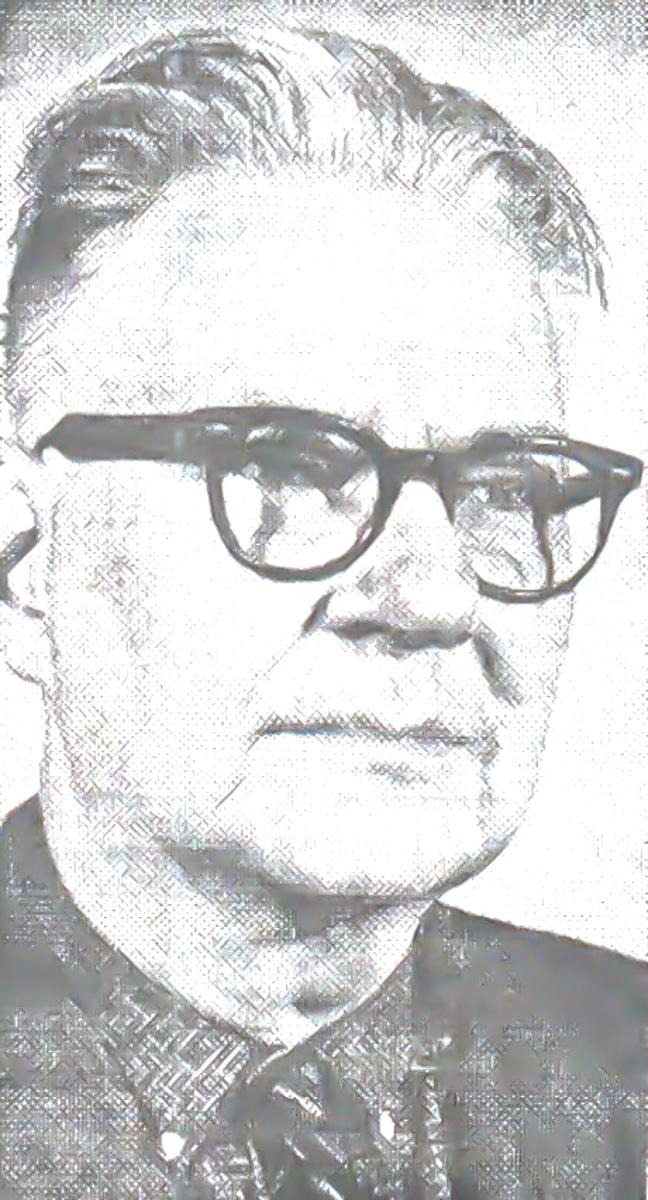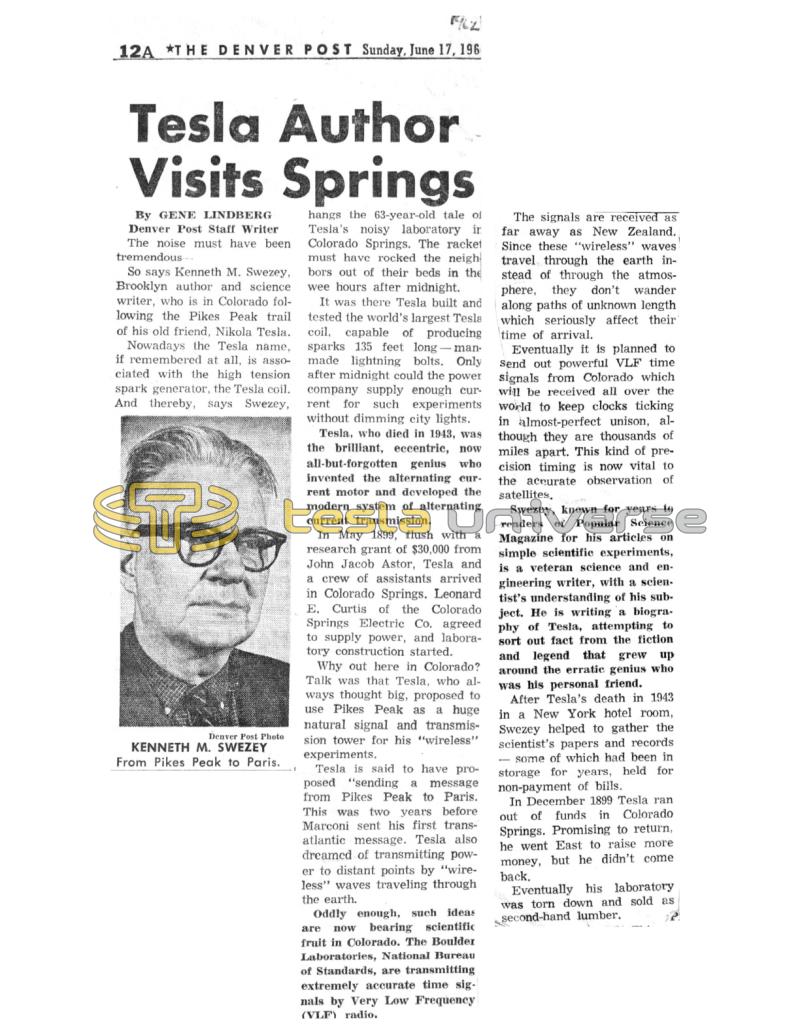
Nikola Tesla Articles
Tesla Author Visits Springs
The noise must have been tremendous.
So says Kenneth M. Swezey, Brooklyn author and science writer, who is in Colorado following the Pikes Peak trail of his old friend, Nikola Tesla.
Nowadays the Tesla name, if remembered at all, is associated with the high tension spark generator, the Tesla coil. And thereby, says Swezey hangs the 63-year-old tale of Tesla's noisy laboratory in Colorado Springs. The racket must have rocked the neighbors out of their beds in the wee hours after midnight.
It was there Tesla built and tested the world's largest Tesla coil, capable of producing sparks 135 feet long-man-made lightning bolts. Only after midnight could the power company supply enough current for such experiments without dimming city lights.
Tesla, who died in 1943, was the brilliant, eccentric, now all-but-forgotten genius who invented the alternating current motor and developed the modern system of alternating current transmission.
In May 1899, flush with a research grant of $30,000 from John Jacob Astor, Tesla and a crew of assistants arrived in Colorado Springs. Leonard E. Curtis of the Colorado Springs Electric Co. agreed to supply power, and laboratory construction started.
Why out here in Colorado? Talk was that Tesla, who always thought big, proposed to use Pikes Peak as a huge natural signal and transmission tower for his "wireless" experiments.
Tesla is said to have proposed "sending a message from Pikes Peak to Paris. This was two years before Marconi sent his first transatlantic message. Tesla also dreamed of transmitting power to distant points by "wireless" waves traveling through the earth.
Oddly enough, such ideas are now bearing scientific fruit in Colorado. The Boulder Laboratories, National Bureau of Standards, are transmitting extremely accurate time signals by Very Low Frequency (VLF) radio.
The signals are received as far away as New Zealand. Since these "wireless" waves! travel through the earth in- stead of through the atmosphere, they don't wander along paths of unknown length which seriously affect their time of arrival.
Eventually it is planned to Send out powerful VLF time signals from Colorado which will be received all over the world to keep clocks ticking in almost-perfect unison, although they are thousands of miles apart. This kind of precision timing is now vital to the accurate observation of satellites.
Swezey, known for years to readers of Popular Science Magazine for his articles on simple scientific experiments, is a veteran science and engineering writer, with a scientist's understanding of his subject. He is writing a biography of Tesla, attempting to sort out fact from the fiction and legend that grew up around the erratic genius who was his personal friend.
After Tesla's death in 1943 in a New York hotel room, Swezey helped to gather the scientist's papers and records - some of which had been in storage for years, held for non-payment of bills.
In December 1899 Tesla ran out of funds in Colorado Springs. Promising to return, he went East to raise more money, but he didn't come back.
Eventually his laboratory i was torn down and sold as second-hand lumber.

